Holy Week
Written by Anne Newman Tuesday, 16 April 2019 - updated with added comments 2020 by Bernadette Mac.

For more information on Easter and Palm Sunday click these links - Easter and Palm Sunday
Holy Wednesday, also called Spy Wednesday
Easter is a moveable feast - not fixed in our normal (non-religious) calendar. As a technical definition for how the date for Easter is decided: the First Council of Nicaea in 325 established the actual date of Easter as the first Sunday after the full moon following the vernal equinox (March 21st) in the northern hemisphere. Thus Easter may fall anywhere between March 22nd and April 25th
Holy Week is the week leading up to Easter. It used to be a full seven-day period of fasting on Black tea, dry bread, potatoes with no butter or buttermilk and perhaps a little porridge. So tough that the Holy Week fast was officially relaxed to two days by the Church authorities in the mid-19th century.
The Last Supper by Leonardo da Vinci
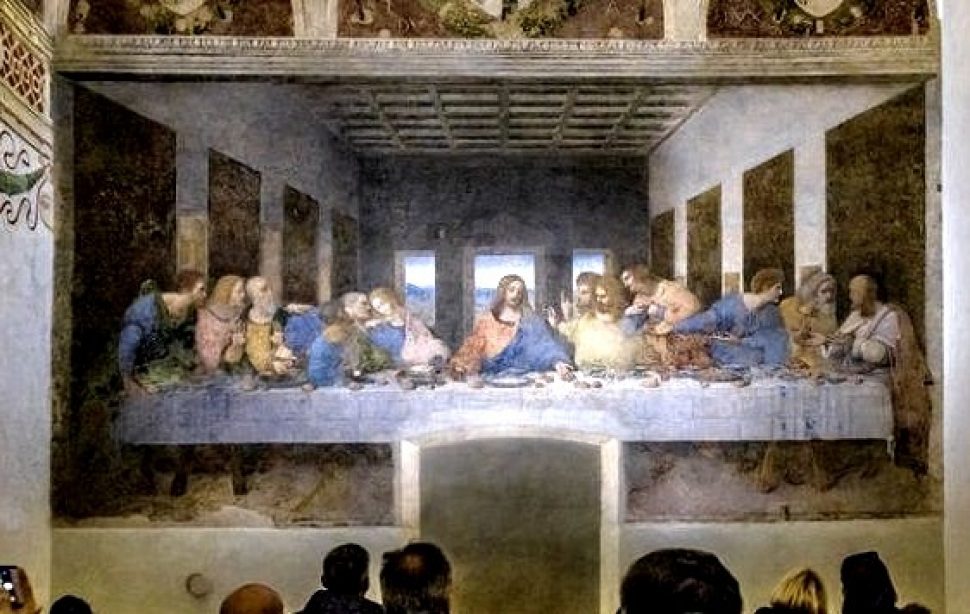
The Sanhedrin, Jewish supreme court, gathered and plotted to kill Jesus before the feast of Passover. On the Wednesday before his death, Jesus was in the house of Simon at Bethany. As he sat at the supper table with his disciples, a woman named Mary washed and anointed Jesus’ feet with a costly oil of Spikenard. Judas asked Jesus why the oil was not instead sold and the money given to the poor. This was said to be the night that Judas went to the Sanhedrin and offered to point out Jesus to them in exchange for money. Because Judas Iscariot's intent to betray Jesus formed on Holy Wednesday, the day is became known as Spy Wednesday.
Czech republic: the day is traditionally called Ugly Wednesday, Soot-Sweeping Wednesday or Black Wednesday, because chimneys used to be swept on this day, to be clean for Easter.
Malta: this day is known as L-Erbgħa tat-Tniebri (Wednesday of Shadows), referring to the liturgical darkness (tenebrae). In the past children went to the parish church and drummed on the chairs to make the sound of thunderstorms, as their version of the "strepitus" sound at Tenebrae Wednesday.
Scandinavia: this day is known as Dymmelonsdagen. A dymbil is a piece of wood. Historically, the metal clapper of the church bells were replaced by these dymbils on Holy Wednesday, to make a duller sound.
Holy Thursday
Holy Thursday commemorates the events that took place on the night before Jesus’ crucifixion. Jesus Christ instituted the Eucharist during the Last Supper. Jesus washed his disciples’ feet before the Last Supper as a sign and example of humility and love. It also remembers the betrayal of Jesus by Judas in the Garden at Gethsamane and the Arrest of Jesus and betrayal by Peter.
The Book of Common Prayer of the Church of England uses the name "Maundy Thursday", Ireland and Scotland tend to use Holy Thursday. Maundy comes from the Latin word mandatum, "commandment". It refers to Jesus’ words after he washed his disciple’s feet -to love one another as he loved them. A Latin anthem sung: “Mandatum novum do vobis” (“a new commandment I give to you” used to be sung in earlier times.
Churches may also have the blessing of holy oil and feet washing as part of their Holy Thursday service. During the evening liturgy the Hosts are consecrated for the communion on Good Friday (when there is no liturgy). Then the celebrant ceremonially washes the feet of 12 people in memory of Christ’s washing the feet of his disciples.
Maundy Thursday was also known as Char, Shrift, and Sharp Thursday. These names are believed to have derived from cutting or trimming hair or beards before Easter during the 14th century. This particular custom signified spiritual preparation for Easter.
Also known as Sheer Thursday (clean Thursday), which refers to the ceremonial washing of altars on this day.
In Ireland it was said that one should get a haircut, to prevent headaches!
Holy Thursday is sometimes called clipping Thursday because it is said that Our Lords nails, toe nails and beard were cut of by the Jews. The people go to the church on Good Friday at three o'clock to adore Jesus. Holy Thursday
On this day the old people got their hair trimmed and nails cut, as they abstained from doing this during Lent, as a form of penance. Because of this custom it was called clipping Thursday. duchas.ie Clipping Thursday
The eggs laid on Holy Thursday are kept for Easter Sunday. There is always a little cross put on all these eggs. The people eat them on Easter morning. They are called Holy Thursday's eggs. Keep the eggs for Sunday - Duchas.ie
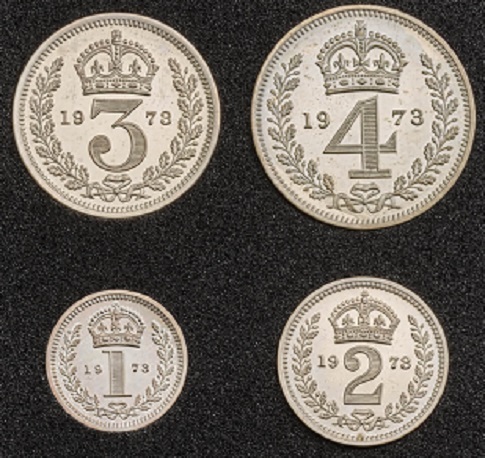
In England, alms are distributed to the poor by the British Soverign in a ceremony held at a different church each year. This developed from a former practice in which the Soverign washed the feet of the poor on this day. The Soverign offers "alms" to deserving senior citizens, one man and one woman for each year of the Sovereign's age. These coins, known as Maundy Money or Royal Maundy, are distributed in red and white purses, and is a custom dating back to King Edward I. The red purse contains regular currency and is given in place of food and clothing; the white purse has money in the amount of one penny for each year of the Sovereign's age. Since 1822, rather than ordinary money, the Sovereign gives out Maundy coins which are specially minted 1, 2, 3 and 4 penny pieces, and are legal tender. The service at which this takes place rotates around English and Welsh churches, though in 2008 it took place for the first time in Northern Ireland at Armagh Cathedral.
In Germany, MaundyThursday is known as "Green Thursday" (Gründonnerstag) from the early practice of giving penitents a green branch as a token for completing their Lenten penance. Green vegetables and salad, including spinach salad, are served as part of the tradition.
In Norway it is known as skjærtorsdag and is a day off for workers and students. It is known as skärtorsdagen in Sweden and is linked to a folktale about a witches’ day.
Good Friday - Aoine anChéasta
Good Friday remembers the crucifixion and death of Jesus Christ. and was a day of fasting and no meat was eaten. In the Latin church, a fast day is understood as having only one full meal and two smaller meals, the two of which together do not equal the one full meal.
Many church services are held, usually around noon or midday to 3pm, to remember the hours when Jesus hung on the cross. Many churches also observe the day by re-enacting the procession of the cross as in the ritual of the Stations of the Cross, which depicts the final hours of Jesus’ life.
From three o’clock.the time Jesus is said to have died, the bells are no longer rung in the church until Easter Sunday and all the statues and crucifixes are covered.
The day is also known as Black Friday or Sorrowful Friday, as well as Long Friday.
Good Friday is the day for confessions and asking for forgiveness. It was the custom that no outdoor work would take place on Good Friday in Ireland it was a day of rest and preparation of body and soul for Easter.
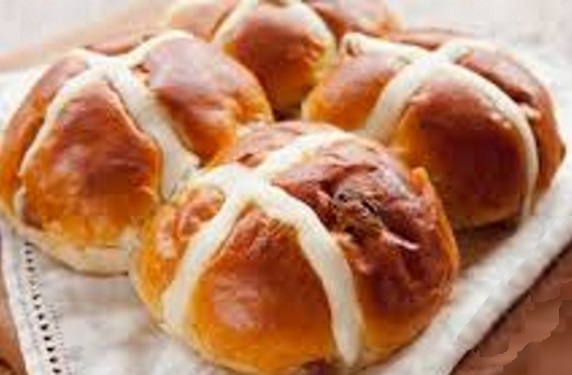
Since medieval times, all bread baked on Good Friday was marked with a cross in remembrance of Christ's crucifixion on this day. The custom survives in the Hot Cross Buns we eat in modern times.
The Christian symbolism of the bun marks the end of Lent and different parts of the hot crossbun have a certain meaning, including the cross representing the crucifixion of Jesus, and the spices inside signifying the spices used to embalm him at his burial.
One theory is that the Hot Cross Bun originates from St. Albans where Brother Thomas Rodcliffe, a 14thCentury monk at St Albans Abbey, developed a similar recipe called an 'Alban Bun' and distributed the bun to the local poor on Good Friday,starting in 1361.
During the reign of Elizabeth I the London Clerk of Markets issued a decree forbidding the sale of hot cross buns and other spiced breads, except at burials, on Good Friday, or at Christmas.
The first definite record of hot cross buns comes from a London street cry:
"Good Friday comes this month, the old woman runs.
With one or two a penny hot cross buns",
which appeared in Poor Robin's Almanac for 1733.
English folklore includes many superstitions surrounding hot cross buns. One of them says that buns baked and served on Good Friday will not spoil or grow mouldy during the subsequent year. Another encourages keeping such a bun for medicinal purposes. A piece of it given to someone ill is said to help them recover. If taken on a sea voyage, hot cross buns are said to protect against shipwreck. If hung in the kitchen, they are said to protect against fires and ensure that all breads turn out perfectly. The hanging bun is replaced each year.
Other Traditions
Holy well water is said to have curative powers on this day.
If a child is born in Good Friday and then baptized on Easter, he or she will have the gift of healing (a boy born on Good Friday will go into the priesthood).
Anyone who dies on Good Friday will do directly to heaven.
On Good Friday visits should be paid to holy wells and graveyards.
On Good Friday no fishing is done from boats – only sea food gathered on shore (seaweed; shellfish) will be part of the Easter meal.
When I was growing up there was only classical music on the radio and religious themed movies on the tv. It was said to get dark at three pm as that was the time Jesus died. I always remember this happening.
In the Philippines the day is commemorated with street processions, the Way of the Cross, the chanting of the Passion and performances of the Passion play. Some devotees engage in self-flagellatation and some even have themselves crucified as expressions of penance despite health risks and strong disapproval from the Church.
Kites, that are often handmade, are flown in Bermuda on Good Friday to symbolize the cross that Jesus died on, as well as his ascension into heaven. This custom dates back to the 19th century. Easter in Bermuda
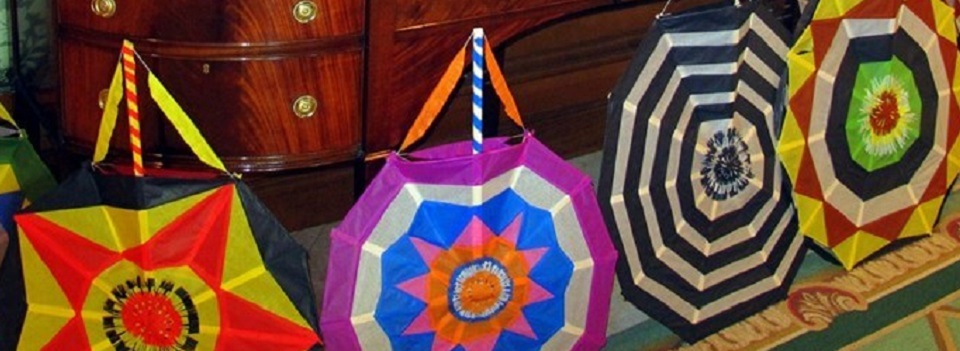
Churches in countries, such as Belgium and Mexico, are draped in black on Good Friday in memory of Jesus’ suffering on the cross. The day is solemn and a general air of sadness is felt in many towns and villages.
Many Christians in Poland fast on dry bread and roasted potatoes. Egg decorating is also part of the Easter preparations in Poland and many other countries.
In the Republic of Ireland, Good Friday is not an official public holiday, but most non-retail businesses close for the day. For 90 years Public Houses in the Republic of Ireland were closed on Good Friday as it was illegal to sell alcohol then. An amendment to this Law was passed in 2018 so this year will be the first year that pubs can choose to open. In Northern Ireland however pubs must still close from Holy Thursday to Easter Sunday.
Easter Sunday also called Paschal or Resurrection Sunday
- written by Anne 23rd April 2019
Easter Sunday, also called Paschal or Resurrection Sunday, commemorates the resurrecrtion of Jesus from the dead. According to the Gospel of John in the NewTestament, Mary Magdalene came to the tomb where Jesus was buried and found it empty. An angel told her that Jesus had risen.
Many Christians worldwide celebrate Easter with special church services, exclaiming the Paschal Greeting, Clipping the Church, music, candlelight, flowers and the ringing of church bells.
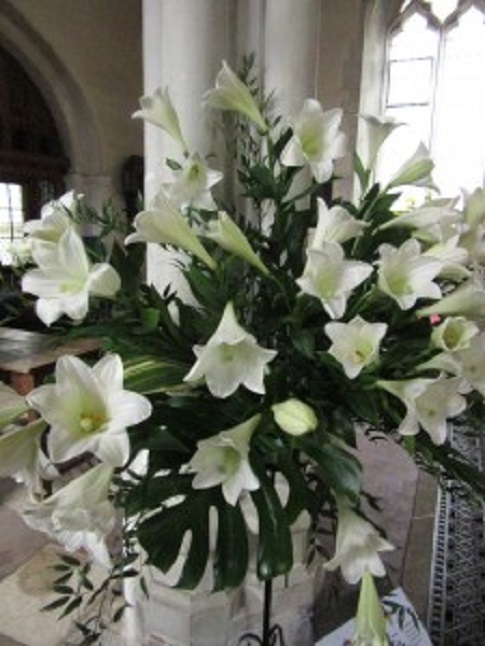
Easter processions are held in some countries such as Ireland, Spain and the Philippines. The Easter parade in Dublin commemorates the Easter Rising in 1916.
The Easter Lily, a symbol of the resurrection, traditionally decorates the chancel area of churches on this day and for the rest of Eastertide.
In Ireland, Cumann namBan, under Constance Markievicz, initiated the wearing of the lily in Easter 1926. The lily that is used as a seasonal decoration in churches during Easter inspired its design. The birth / death / resurrection symbolism of the lily commemorates those who died for Irish freedom.
In Italy many towns hold sacred Easter story dramas. Pastries called corona di noveare baked in the form of a crown. Other traditional foods include capretto (lamb) and agnello (kid/goat).
In Neapolitan Cuisine the main Easter dishes are the casatielli or tortano, a salty pie made with bread dough stuffed with various types of salami and cheese, also used the day after Easter for outdoor lunches. Typical of Easter lunches and dinners is the fellata a banquet of salami and capocollo and salty ricotta. Typical dishes are also lamb or goat baked with potatoes and peas.
Easter in Poland is celebrated with family meals that include ham, sausages, salads, babka (a Polish cake) and mazurka, or sweet cakes filled with nuts, fruit and honey.
Sunday 5 May 2013 is Easter in the Coptic Church - Bernie in Egypt shared that they boiled an egg, painted it all colours making wishes then ate it, with music and dance after.
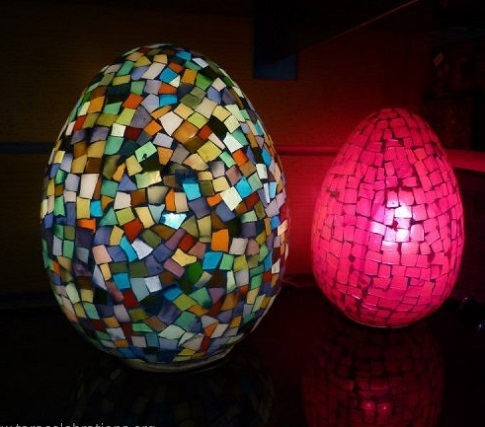
Easter eggs and the Easter Bunny are both fertility symbols, hold overs from the feast of Eostara. Others have a tradition of decorating Eggs as symbols of the empty tomb. There are also various traditional Easter foods that vary regionally.
In Greece, the traditional Easter meal is mageiritsa, a hearty stew of chopped lamb liver and wild greens seasoned with egg and lemon sauce. Traditionally, Easter eggs, hard-boiled eggs dyed bright red to symbolize the spilt Blood of Christ and the promise of eternal life, are cracked together to celebrate the opening of the Tomb of Christ.
In Russia, red eggs, kulich and paskha are Easter traditions.
In Serbia, paretak are traditional Easter pastries.
In Ukraine, there are several traditional Easter foods including paska bread and cheesecake desserts.
Easter eggs and the Easter Bunny are both fertility symbols, hold overs from the feast of Eostara. Other symbolic parallels include the pagan joy in the rising sun of spring, which coincides with Christians’ joy in the rising Son of God, and the lighting of candles in churches, which corresponds to the pagan bonfires.
Clipping / Clypping the Church on Easter Monday
Clipping / Clypping the Church is an ancient custom that was traditionally held in England on Easter Monday. It involves either the church congregation or local children holding hands in an outward-facing ring around the church. Once the circle is completed on lookers will often cheer and sometimes hymns are sung. Often there is dancing. Following the ceremony a sermon is delivered in the church and there are sometimes refreshments.
Clipping - Christians adopted this tradition to show their love for their church and the surrounding people. Rawdon St Peter's Church, West Yorkshire
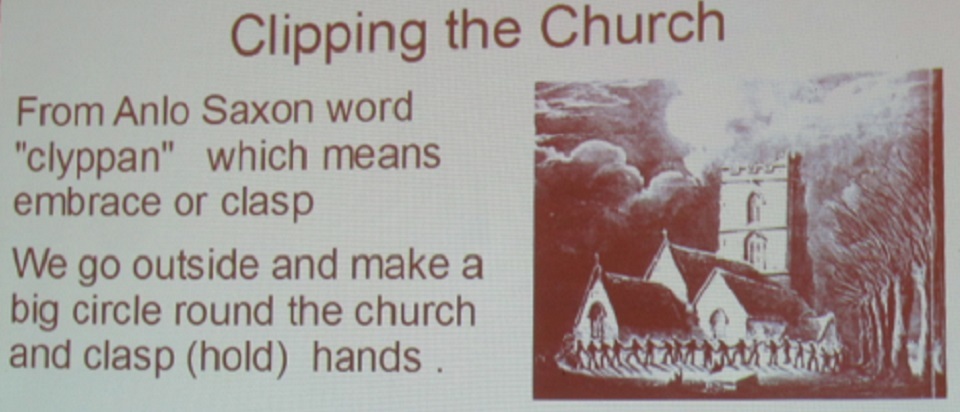
Currently, there are only a few churches left in England that hold this ceremony, and all of these appear to honour it on a different day, often a date relevant to the Saint associated with that church.
Nothing has been proven, but was rumoured to have origins in some type of Pagan custom, but nothing has been substantiated. Even allowing for adaptation, what is known is clearly a Christian tradition. The earliest known written mention of it dates from 1825 in a description of the ceremony given by "L.S." in The Every-day Book, are counted memory of his childhood.
Because of this reference, it is thought that the ceremony might have undergone a revival in the early 19th century. It was a custom in several parishes in the Midlands, having died out in various places later in the 19th century.
Here’s some of the places it is held. The days may vary
Wirksworth, Derbyshire holds its annual custom of Clipping the Church on the Sunday nearest to the 8th of September. It involves surrounding the ancient Church, which is dedicated to St Mary the Virgin, by holding hands. The custom was revived in 1921 after a lapse of many years, and it is supposed to be an outward display of affection by the parishioners, for their church. Its origins are unknown. After a morning service the vicar and choir start a circuit of the building, with the churchgoers following, holding hands, forming a complete ring whilst singing `We love thy place O Lord in which Thine honour dwells`. Sometimes there is a procession through the town, joined by churchdignitaries.
A similar custom takes place at Burbage Parish Church, near Buxton, on the last Sunday in July.
At St Peter’s Church in Tankersley, Barnsley, South Yorkshire it has continued annually since 1926. The service of Clyppings is held annually on the second Sunday following St Peter’s day (29 June). The service held in the parish church is followed by the congregation trouping out to form a ring around the church, They sing a Hymn played by a Trumpeter and in the case of St Peters’ of Tankersley it is the hymn ‘We Love thyplace o God’. A prayer is then said with the congregation facing the church and then the congregation all face outwards to the world where they pray for the wider community and the world.
St Andrew's Church, Wisset in Suffolk, have revived the tradition of Clipping since about1995. When the church is fully embraced, people from Wissett and the wider area sing 'Lord of the Dance'. The church is clipped annually on Shrove Tuesday and this is followed by a serving of pancakes in the village hall.
At the Church of St.Lawrence at Rhode, Somerset, the circle face inwards dancing left and right before rushing towards the church with a cheer.
The Church of All Saints at Wilden, Worcestershire, adopted the practice in 2018. Clypping is undertaken with the circle facing inwards. The churchbell rings three times and the circle dances to the left, then thebell rings three times more and the circle dances to the right. The bell rings a final three times and the circle cries 'God bless Wilden'.
St Thomas-on-The Bourne church in Farnham, Surrey, clypping of the "mother church"takes place on Mothering Sunday
Holy Week - 6th to 12th April 2020
Messages posted during the Covid-19 pandemic.
Photographs by Martin D. Beautiful. Blessings, Bernadette Mac.
We are all connected to a divine light and loving presence. Feel it with you heart and deep within you today. 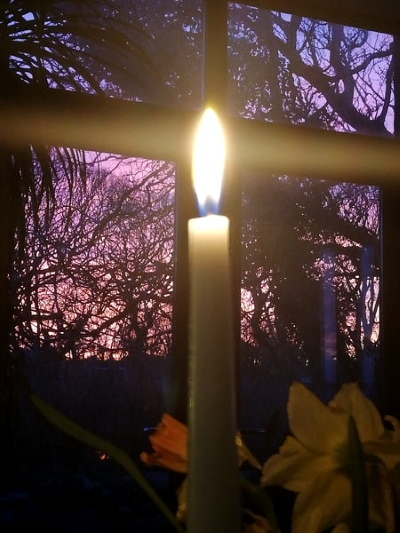 | Connect to your inner wisdom. Deep within you will find the relationship to self to be one of great healing and a learning of self love and gratitude. 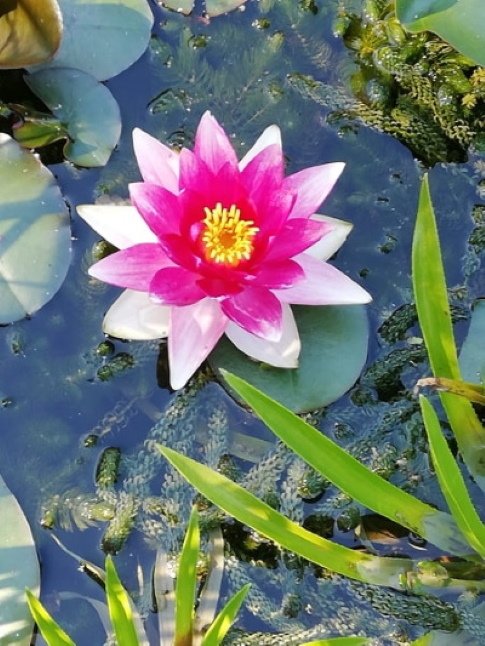 |
Wednesday 8th April - overnight a Full Moon
The world may be standing still at the moment for the human race. They all, however, are seeing Mother Nature's beauty, showing herself to all. Even some animals are coming out of the woods and walking the streets, like deer and fox. Sheep have been spotted on children's playground. It's like the animal kingdom has come out to play. It just warms the heart.
| Read more here... Full Moon Celebrations archive | 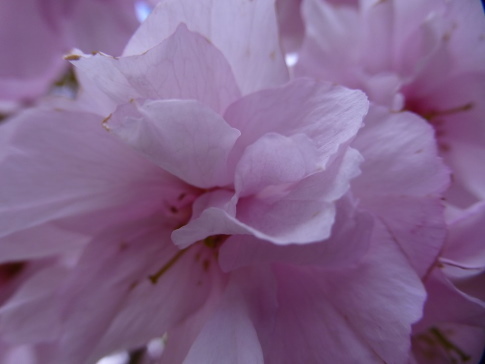 |
9th April - Holy Thursday.
Connect with your inner guidance. Your angels are in the heavens and on earth. Listen to that inner voice through prayer.
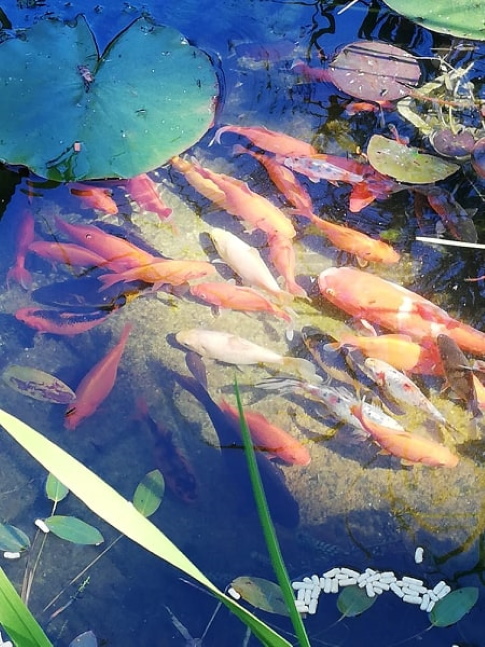 | 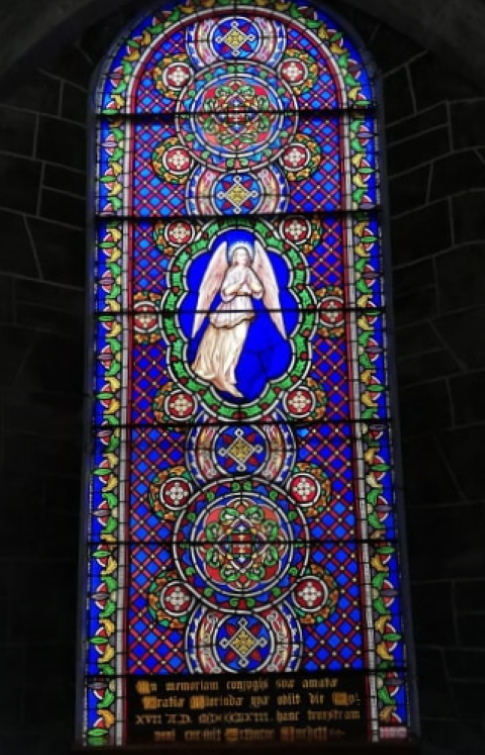 |
10th April 2020 - Good Friday
Many blessings and a happy Easter to all. This beautiful photo - Martin D.....
| Connect to your higher self in this time of silence and stillnes, remembering you will rise again in awareness, knowledge, love and gratitude. | 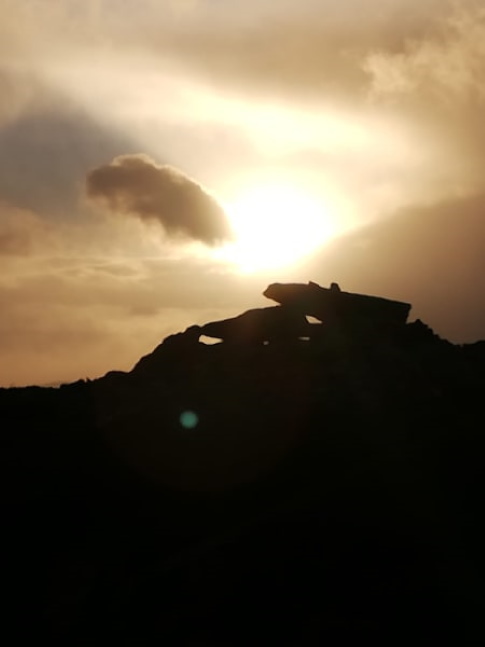 |
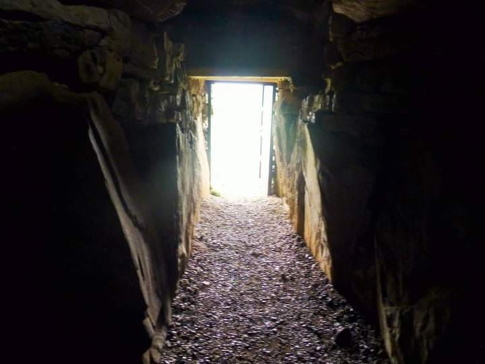
11th April 2020 - Holy Week Saturday
Hi everyone! today's quote:
Shine your light more brighter than ever today, so when you look back on these times you know you have done your best. Lift your vibrations and rise above everything that is not of that light. In the energy of love. Blessings to all.
Photos taken by Mary O'Halloran, Martin Dier and Bernadette MacDonald
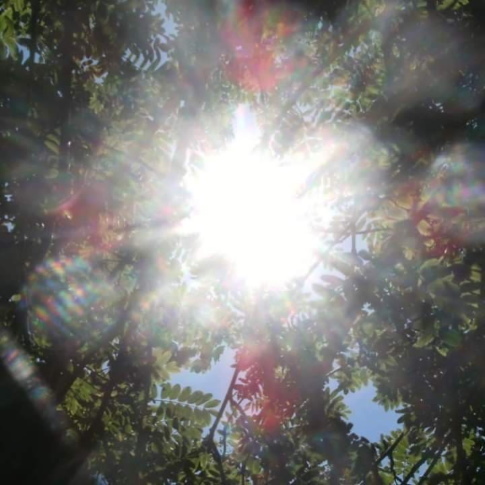 | 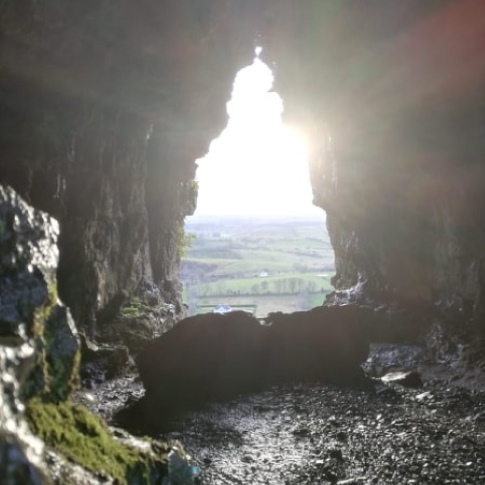 |
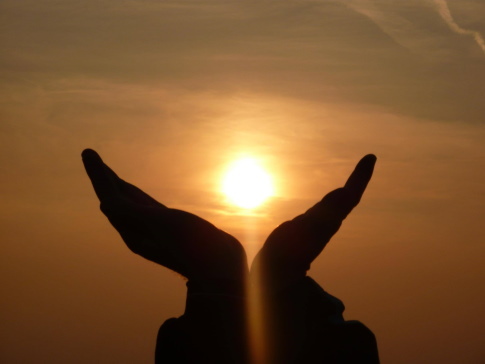
Sunday 12th April 2020 - Easter Sunday
May you rise with a new purpose, new creative ideas, new love, and a new Beginnings.
May you share with others your gifts so we can all live again in harmony with each other, from a place of forgiveness and gratitude, and no judgement.
They say love conquers all. Now is the time to see if that works.
Blessings to all Bernadette Mac. Have a very happy Easter.
Shine Your Light
Written by Anne N 11th April 2020
Tonight President Michael D. Higgins and his wife Sabina are set to shine their light from the Áras at 9pm this evening on this “Shine your L.ight” night.
People around Ireland are today being asked to take part in a national initiative to honour all the sick, those who have lost their lives, frontline staff and healthcare workers during the Covid-19 pandemic.
Government buildings will light up with a host of national and local public buildings across the island shining their beacon lights, along with Irish embassies and missions around the world.
#ShineYourLight/ #LonraighdoSholas is calling on people of all ages, to be as creative as they wish to either power their phone torches, flash house lights, leave a candle safely in the window or even put up Christmas lights, to participate in the initiative from wherever they are.
RTÉ will be broadcasting on TV, radio and online with special content to mark this occasions of us coming together and share our light during what is a dark time for many people. They will broadcast images from around the country as families, individuals and workers shine their light, along with local and national public buildings and embassies around the world, joining in solidarity with their communities and loved ones near and far.
Coverage begins on RTÉ Radio 1 at 8:30pm with Shine Your Light with John Creedon featuring music from some of our finest artists including Martin Hayes and Glen Hansard, and poetry from Moya Cannon. Also Participating are Gabriel Byrne, Sinéad O'Connor, Glen Hansard, Saoirse Ronan, Colm Mac Con Iomaire, Paula Meehan, Marie Mullen and others.
RTÉ Director-General Dee Forbes said: "This global pandemic is affecting each and every person in our society and Saturday evening at 9pm is a moment where we can come together while we are apart in solidarity with each other.
"Lets light up our homes or light a candle to remember all of those who have lost their lives to Covid-19 and their loved ones."
Lets also remember and thank our key frontline staff for their ongoing heroic work throughout this crisis. Light reaches across all boundaries and as we watch the light flicker, perhaps we will see a glimmer of hope, in this time of fear and distancing."





